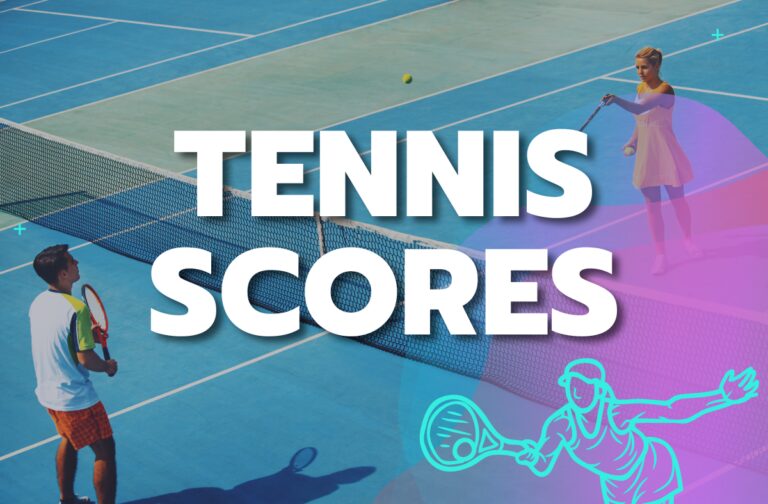What is no-ad scoring and how does this alter the traditional outcome of tennis scores in a game? To answer this, let’s first acknowledge that tennis is not only a national sport, but a respected international sport played in nations around the world.
The International Tennis Federation (ITF) is the world governing body of tennis that sanctions the rules and guidelines to direct the results of tennis scores in a game, set, or match.
The standardized point system identified in the rules and guidelines is ‘0 or Love’, ’15’, ’30’, ’40’, ‘Game’. This seems simple enough, so why is no-ad (no-advantage) scoring introduced as an alternative method to determine the outcome of tennis scores in a game?

There are several justifications for incorporating no-ad scoring as an alternative to accelerate the advancement of tennis scores in a game. In most cases though, no-ad scoring is utilized as a means of time management in tennis game play.
This alternative method to expedite the results of tennis scores in a game is frequently exercised by tennis coaches in group lessons when time is of the essence. Typically, tennis coaches employ no-ad scoring to accelerate tennis game play during practice and to simplify tennis scores for newcomers to the game of tennis.
Tennis tournaments every now and then incorporate no-ad scoring to determine the outcome of tennis scores in a match. From time to time, tournament officials may predetermine the utilization of no-ad scoring as part of the rules and guidelines for match play in a tennis tournament.

There are a number of factors for integrating no-ad scoring in tennis tournaments, but the most common factors are restricted court space and insufficient time designated for the tournament. The restricted court space and insufficient time factors that initiate no-ad scoring are routinely the results of an unexpected or an expected mass amount of tennis competitors participating in a tournament.
The no-ad scoring process is rather simple. Basically, tennis competitors compete to earn points and the first competitor to earn four points wins the game.
Part of the traditional point scoring of ‘0’, ’15’, ’30’, and ’40’ is maintained. Some tennis players prefer to use an alternative method of scoring…the ‘0’, ‘1’, ‘2’, ‘3’ point scoring system.
Both the traditional and alternative point-scoring systems are acceptable and can be utilized in no-ad scoring. When the game score is 40-40 (Deuce) in traditional scoring or 3-3 in alternative scoring, this is where no-ad scoring is employed.
At this point, traditional scoring would dictate that a player must win by two points to win the game.
The score would continuously rotate from ‘Deuce to Ad to Deuce to Ad’ until one of the competitors or one of the teams win two consecutive points to close out the game.
The precondition to win by two or more points in a game is no longer a factor when no-ad scoring is employed.
In no-ad scoring, a competitor only has to win by one point.
Therefore, when the score is 40-40 (Deuce) in traditional scoring or 3-3 in alternative scoring, the next point wins the game.

Prior to playing for this point and ultimately closing out the game, the receiving player or the receiving team in doubles chooses to receive serve in the right service court (deuce court) or the left service court (advantage court).
Mixed-Doubles is the only competition that negates this rule. When competing in a mixed-doubles tennis game, the server serves to the receiver of the same gender.
The player or team who wins this point simply wins the game period.
Many top-notched tennis competitors will not compete in tournaments where no-ad scoring is part of the scoring rules and guidelines. To them, no-ad scoring can be a disadvantage for a couple of reasons.
Top-notch athletes train to wear down opponents slowly, but surely over the longevity of a match. Given that it only takes a maximum of seven points to win a game, a no-ad scoring match is over in a minimal amount of time in comparison to traditional tennis game scoring.
Additionally, a tennis competitor who has equally polished techniques and skills could win the match even if this competitor lacks the conditioning to go the distance. This is an advantage for this type of athlete, but a disadvantage for the athlete who is conditioned to go the distance if that athlete does not edge out the competition early in the game, set, or match.
No-Ad Scoring Tips

- 4 points earned, wins the game
- 7 points is the maximum points played in a game
- 1 point earned after the score is 40-40 (deuce) in traditional scoring or 3-3 alternative scoring wins the game
- the receiver or the receiving doubles team decides which service court (right or left) to receive serve when 6 points have been played and the game is tied
- the 7th point served in mixed-doubles is served from the server to the receiver of the same gender
There are advantages and disadvantages to the no-ad point scoring system. Tennis players participating and competing in a tennis match must know how to differentiate between traditional point-scoring and no-ad scoring to maintain tennis scores within the match.
Related Articles:
Related:
- 20 Best Tennis Shoes 2024 - Stylish and Athletic
- 18 Best Tennis Racquets 2024 - Exclusive Reviews &…
- Top 19 Best Tennis Bags 2024 [Unbiased Reviews]
- 15 Best Tennis Balls 2024 - USTA and ITF Approved
- 15 Best Tennis Racquet for Beginners & Intermediate…
- 10 Best Tennis Shoes for Men 2024 - Exclusive Reviews











